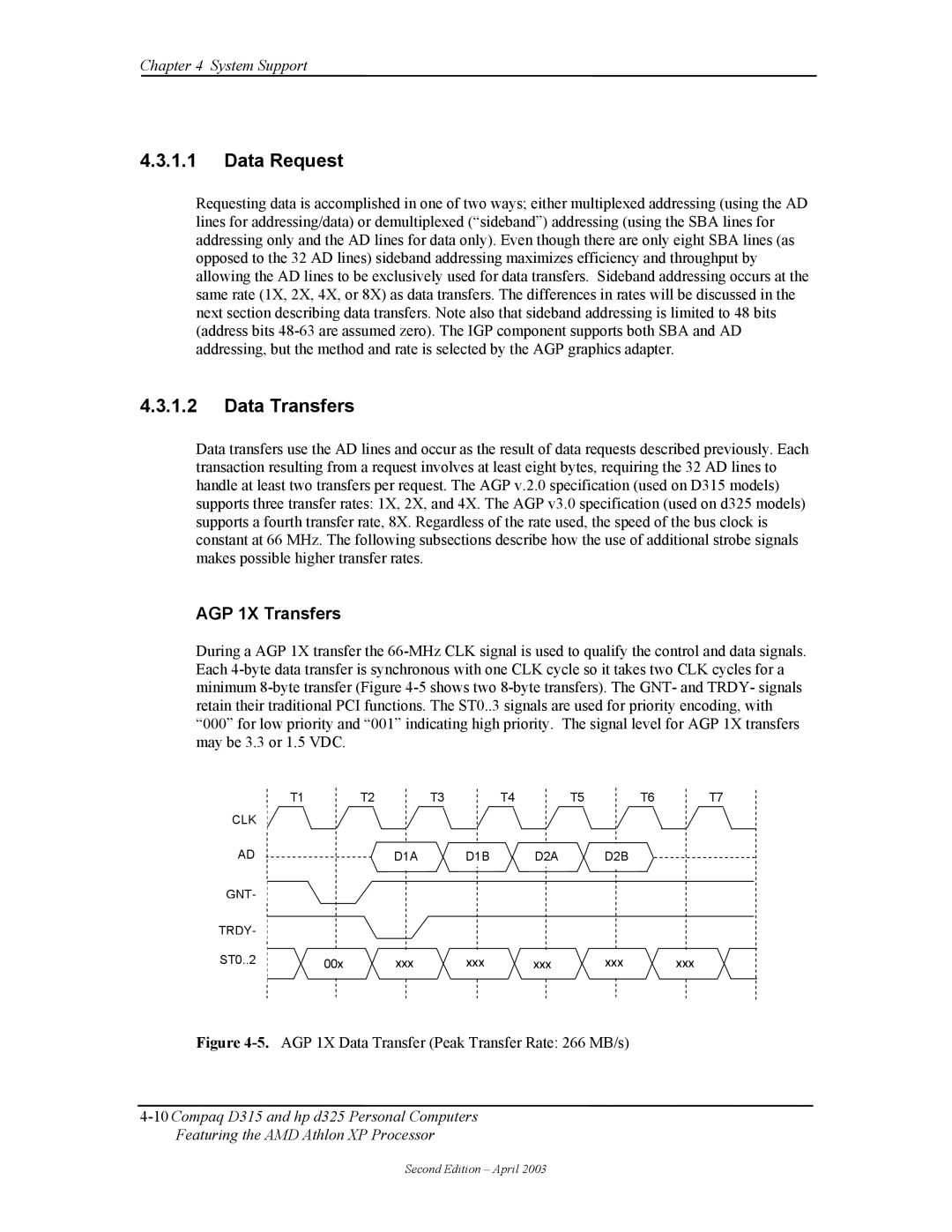
Chapter 4 System Support
4.3.1.1Data Request
Requesting data is accomplished in one of two ways; either multiplexed addressing (using the AD lines for addressing/data) or demultiplexed (“sideband”) addressing (using the SBA lines for addressing only and the AD lines for data only). Even though there are only eight SBA lines (as opposed to the 32 AD lines) sideband addressing maximizes efficiency and throughput by allowing the AD lines to be exclusively used for data transfers. Sideband addressing occurs at the same rate (1X, 2X, 4X, or 8X) as data transfers. The differences in rates will be discussed in the next section describing data transfers. Note also that sideband addressing is limited to 48 bits (address bits
4.3.1.2Data Transfers
Data transfers use the AD lines and occur as the result of data requests described previously. Each transaction resulting from a request involves at least eight bytes, requiring the 32 AD lines to handle at least two transfers per request. The AGP v.2.0 specification (used on D315 models) supports three transfer rates: 1X, 2X, and 4X. The AGP v3.0 specification (used on d325 models) supports a fourth transfer rate, 8X. Regardless of the rate used, the speed of the bus clock is constant at 66 MHz. The following subsections describe how the use of additional strobe signals makes possible higher transfer rates.
AGP 1X Transfers
During a AGP 1X transfer the
T1 | T2 | T3 | T4 | T5 | T6 | T7 |
CLK
AD | D1A | D1B | D2A | D2B |
GNT-
TRDY- |
|
|
|
|
|
|
ST0..2 | 00x | xxx | xxx | xxx | xxx | xxx |
Figure 4-5. AGP 1X Data Transfer (Peak Transfer Rate: 266 MB/s)
Second Edition – April 2003
